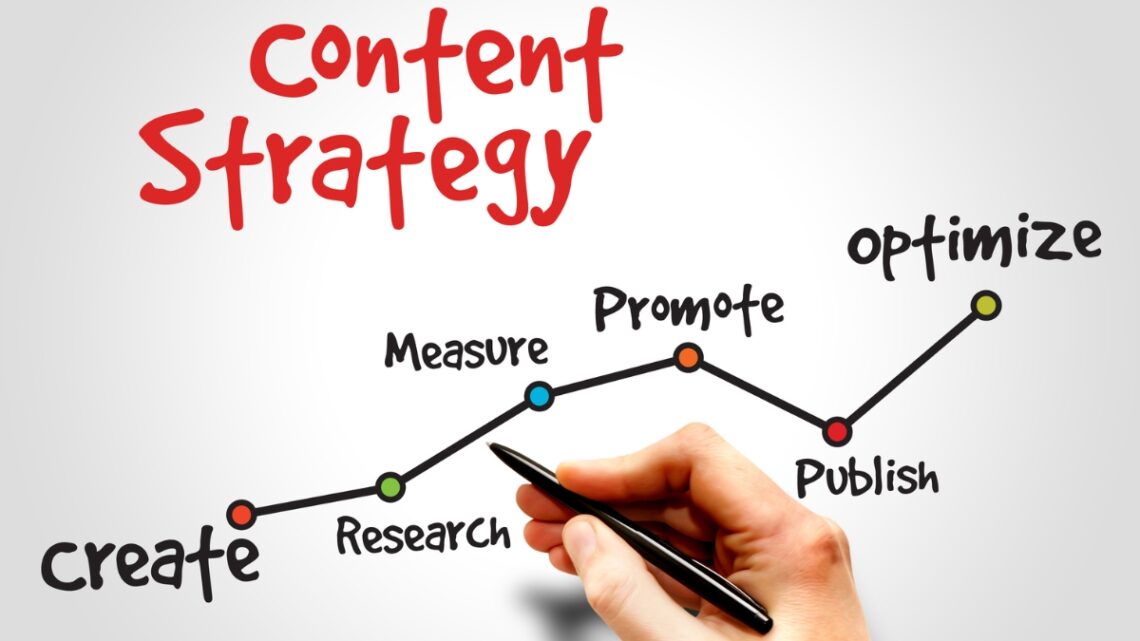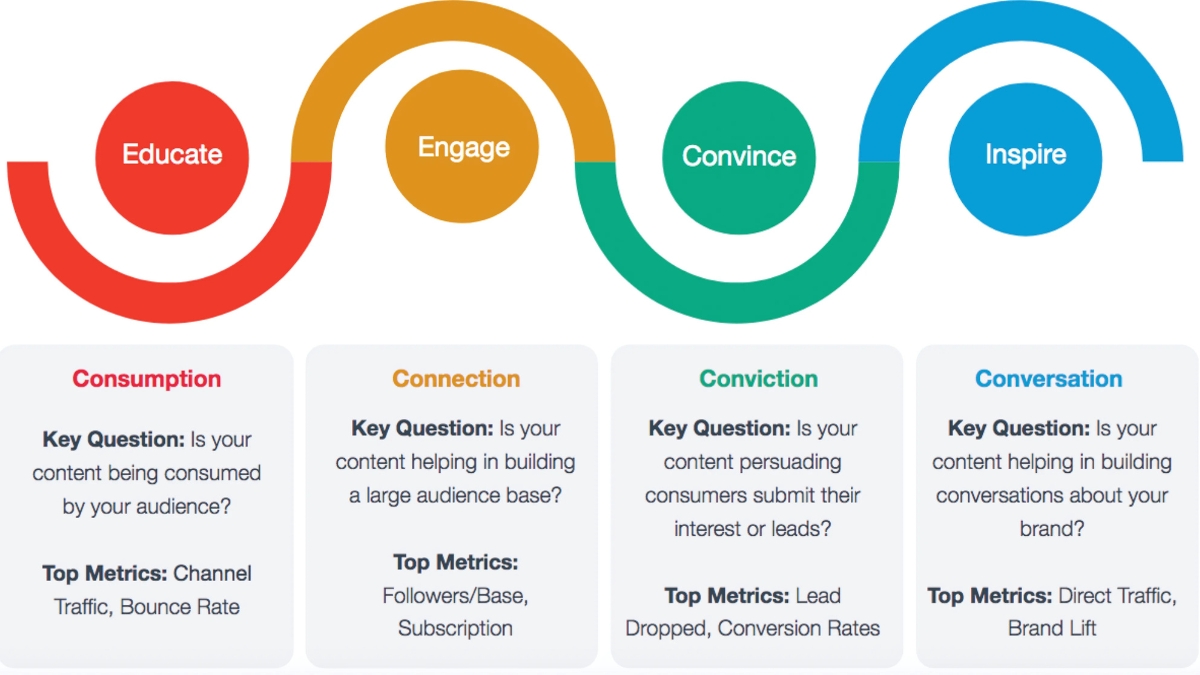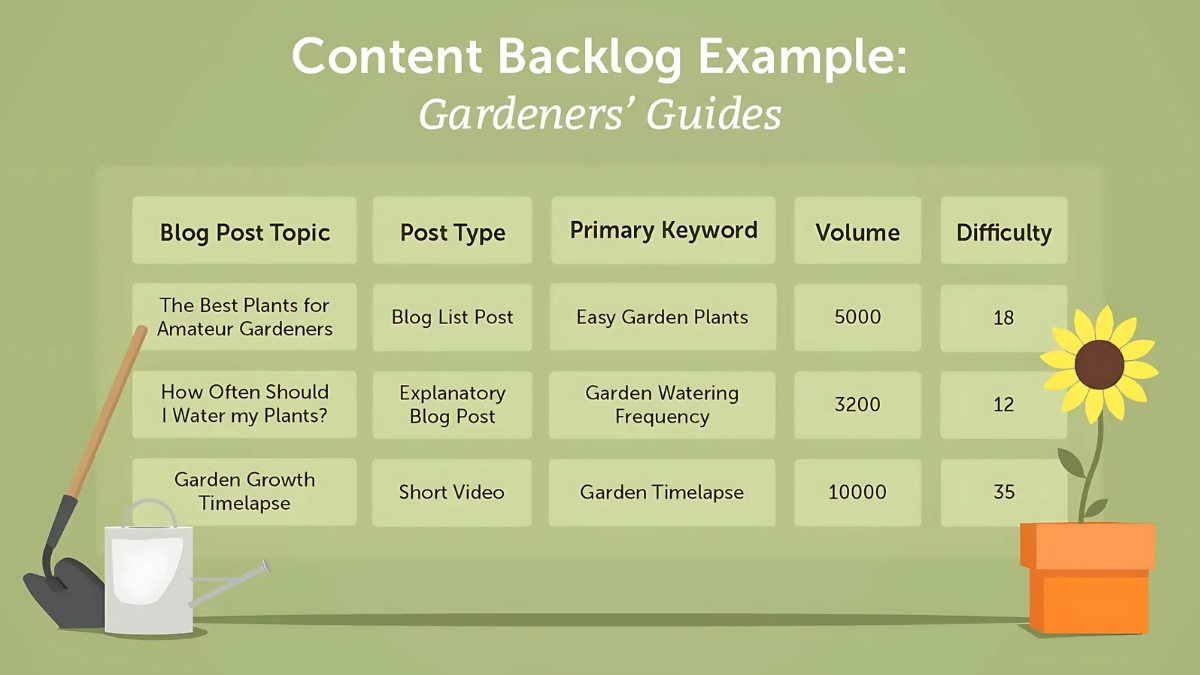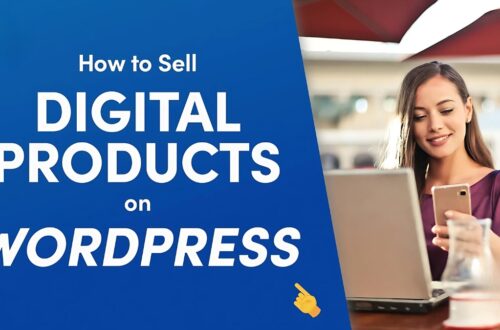
Blog Content Strategy: A Complete Guide to Creating High-Impact Content in 2025
Did you know that companies with a documented content strategy are 3x more likely to report success in their content marketing efforts? Yet surprisingly, only 40% of businesses have a formal content strategy in place. In this comprehensive guide, we’ll walk through everything you need to know to create and execute a powerful blog content strategy that drives real results. Whether you’re starting from scratch or looking to optimize your existing approach, you’ll find actionable insights to take your content game to the next level!
Understanding the Foundations of Blog Content Strategy
When I first started managing content for tech companies, I thought creating a content strategy meant just writing blog posts whenever inspiration struck. Boy, was I wrong! After watching several promising blogs fizzle out due to lack of direction, I realized that a proper content strategy is like building a house – you need a solid foundation before you start decorating the rooms.
Here’s what I’ve discovered makes up that critical foundation:
First, you need crystal-clear goals. I remember working with a SaaS startup that was pumping out three blog posts a week, but their traffic wasn’t converting. Why? Because they hadn’t defined whether their main goal was generating leads, building authority, or supporting existing customers. Once we aligned their content with specific business objectives – in their case, reducing customer support tickets by 30% – everything changed. Their blog became a powerful resource hub that actually moved the needle.
Your audience is the next crucial piece. I made the rookie mistake of writing for “everyone” early in my career. Now I know that understanding your specific audience is like having a secret weapon. For instance, when working with a B2B software company, we created detailed profiles of our readers – IT managers at mid-sized companies who needed to justify software purchases to their CFOs. This laser focus transformed our content from generic tech articles to highly relevant pieces that addressed their exact pain points.
Then there’s your brand voice. Think of it as your blog’s personality. I worked with a cybersecurity company that was trying to sound like everyone else in their space – formal and technical. When we switched to a more approachable, “tech-savvy friend” voice, their engagement rates doubled. People actually started reading their security articles instead of just skimming them!

Distribution is something many people overlook, but it’s absolutely vital. I learned this lesson after spending weeks creating an amazing series of blog posts that hardly anyone saw. Now I know that your distribution strategy needs to be baked into your content strategy from day one. Where does your audience hang out? LinkedIn? Industry forums? Email newsletters? Your distribution channels should influence everything from your content format to your writing style.
The marketing funnel is another crucial element that took me years to fully appreciate. Every piece of content should serve a specific purpose in your funnel. Top-of-funnel content might explain basic concepts and address common problems, while middle-of-funnel content could compare solutions and showcase your unique approach. Bottom-of-funnel content needs to support decision-making with case studies and detailed implementation guides.
Finally, aligning with your brand’s mission and values isn’t just nice-to-have – it’s essential. I once worked with a sustainability-focused company whose blog content was completely disconnected from their core mission of environmental responsibility. When we realigned their content to consistently reflect their values, not only did their SEO improve (thanks to better topical authority), but their audience engagement skyrocketed.
Remember, your content strategy isn’t set in stone. It should evolve as your business grows and your audience’s needs change. The key is having these fundamental elements in place so you have a strong foundation to build upon. Think of it as your content compass – it’ll help you stay on course even when new trends and shiny opportunities try to pull you off track.
What matters most is that your strategy feels authentic to your brand while serving your business goals. Start with these foundations, and you’ll be amazed at how much more effective your content becomes.
Boost your content creation skills with Content Masterclass Downloads! These expertly designed resources teach you how to craft engaging, impactful content that attracts and retains your audience. Learn advanced SEO techniques, storytelling methods, and audience targeting strategies to elevate your brand. Perfect for creators, marketers, and entrepreneurs aiming for content that drives results. Start mastering content creation today and make your voice heard!
Conducting Effective Content Research and Planning
Let me share what I’ve discovered about content research and planning after years of trial and error. I remember when I thought throwing keywords into a tool and picking the highest-volume ones was all there was to research. Those were some rough early days!
The game-changer for my content planning came when I started thinking about keyword research like a detective solving a mystery. Instead of just chasing high-volume keywords, I learned to uncover the actual questions and problems behind the searches. For example, while working with a home improvement blog, we discovered that people searching “how to paint kitchen cabinets” were actually struggling with specific parts of the process – like dealing with old paint or achieving a smooth finish. This insight helped us create super-targeted content that really resonated.
Speaking of keywords, here’s a pro tip that transformed my approach: Look at the “People Also Ask” boxes and related searches in Google. I once found a goldmine of topic ideas for a client’s gardening blog just by diving deep into these sections. The best part? These topics often have less competition but higher intent, which means better conversion rates.
Creating audience personas was another eye-opener for me. I used to think I knew my audience until I actually started talking to them. When working with a personal finance blog, we interviewed real readers and discovered something surprising – many weren’t complete beginners (as we’d assumed), but rather intermediate-level investors looking for specific strategies. This completely changed our content direction and doubled our engagement rates.
Here’s my practical approach to building useful personas:
- Start with your analytics data, but don’t stop there
- Interview actual customers or readers (aim for at least 5-10)
- Monitor social media conversations and comments
- Review customer service inquiries or common questions
- Look at which existing content performs best and why
Competitor analysis is another area where I learned some valuable lessons. It’s not about copying what others are doing – it’s about finding the gaps they’re missing. I remember analyzing content for a pet care website and noticing that while everyone was writing about basic dog training, nobody was addressing specific breeds’ unique challenges. This gap became our opportunity to create highly targeted, valuable content that stood out.

The content calendar piece took me the longest to get right. At first, I tried to plan everything down to the last detail months in advance. Big mistake! Now I use what I call the “flexible framework” approach:
- Plan broad themes for each month
- Schedule cornerstone content pieces quarterly
- Leave room for trending topics and timely updates
- Build in buffer time for unexpected opportunities
- Track seasonal trends and plan accordingly
One of my biggest revelations was realizing that consistency doesn’t mean you have to publish every single day. I worked with a tech blog that was posting daily but seeing minimal engagement. When we scaled back to twice a week but focused on more in-depth, well-researched pieces, our traffic actually increased. Quality really does trump quantity.
For tracking all this, I’ve found that a simple spreadsheet often works better than fancy tools. The key is to include columns for:
- Target keyword and related terms
- Content type and format
- Target persona
- Funnel stage
- Planned publish date
- Status updates
- Performance metrics
The most important thing I’ve learned about content research and planning is that it’s an ongoing process. You need to regularly check your analytics, listen to your audience, and be willing to adjust your plans based on what the data tells you. Some of our best-performing pieces came from being flexible enough to pivot when we spotted new opportunities.
Remember, thorough research and planning might seem time-consuming, but it’s much more efficient than randomly creating content and hoping it works. Trust me, I’ve tried both approaches, and having a solid plan while staying flexible enough to adapt is definitely the way to go.
Want to earn money online doing what you love? PaidOnlineWritingJobs.com connects you with real, flexible writing jobs that you can do from the comfort of your home. From blog posts to social media content, there are countless opportunities waiting for writers of all levels. Sign up now at PaidOnlineWritingJobs.com and start getting paid to write today!
Creating Your Content Framework
I’ll never forget my first attempt at organizing a company’s blog content. It was a scattered mess of random posts with no real connection to each other. Then I learned about topic clusters, and it completely changed the game. Picture this: I was working with a fitness equipment company, and instead of just writing isolated posts about “best treadmills” or “how to use an elliptical,” we created comprehensive clusters around core topics like “home gym essentials” and “cardio equipment guides.” Each main pillar page linked to related subtopics, and our organic traffic increased by 150% in just six months!
Here’s what I learned makes topic clusters work:
- Start with a broad pillar topic (like “strength training”)
- Create subtopic content that naturally links back to the pillar
- Use internal linking strategically to create content relationships
- Update both pillar and cluster content regularly
- Track how clusters perform as a whole, not just individual posts
Templates were another game-changer for me. I used to think they would make content feel robotic, but I couldn’t have been more wrong. When we implemented templates for different post types at a software company I worked with, our content creation time dropped by 40%, and surprisingly, the quality improved! Why? Because writers could focus on the actual content instead of reinventing the structure every time.
The key template types I’ve found most useful:
- How-to guides with clear step-by-step sections
- Product comparison posts with standardized criteria
- Case studies following a problem-solution format
- Expert roundups with consistent question formats
- Resource lists with clear categorization
Style guidelines might sound boring, but they’re absolutely crucial. I learned this lesson the hard way when managing a team of freelance writers. Our content felt disjointed because everyone had their own way of writing. Once we created detailed style guidelines, including specific examples of our brand voice in action, the improvement was dramatic. Our content started feeling cohesive, even with multiple writers.

Your style guide should cover:
- Voice characteristics (friendly but professional, technical but accessible, etc.)
- Specific word choices and phrases to use or avoid
- Formatting standards (headers, lists, image placement)
- Grammar and punctuation preferences
- Examples of both good and bad writing for your brand
The workflow piece is where many content frameworks fall apart. I remember a healthcare blog I worked on where content would get stuck in approval limbo for weeks because we didn’t have a clear process. After implementing a structured workflow with defined roles and deadlines, we cut our publication time in half.
A effective content workflow typically includes:
- Clear assignment briefs with deadlines
- Research and outline approval checkpoints
- First draft submission guidelines
- Editorial review process
- Final approval steps
- Publication and promotion procedures
One of my favorite tricks is creating what I call “modular” templates – basic structures that can be mixed and matched depending on the content type. For instance, a standard “intro module,” several types of “body modules” (comparison tables, step-by-step guides, expert quotes), and various “conclusion modules.” This approach gives writers flexibility while maintaining consistency.
The most important thing I’ve learned is that your framework should be rigid enough to maintain quality and consistency, but flexible enough to allow for creativity and adaptation. Think of it as a blueprint rather than a straitjacket. When done right, a good content framework actually makes it easier to create engaging, high-quality content that ranks well and serves your audience.
Remember to review and refine your framework regularly based on what’s working and what isn’t. The digital landscape is always evolving, and your framework should evolve with it. Just don’t change things so often that your team can’t keep up – find that sweet spot between consistency and improvement.
Optimizing Content for Search and Engagement
I remember working on a home improvement blog where we initially focused so much on keyword placement that our content read like a robot wrote it. After Google’s helpful content update hit us hard, we had to completely rethink our approach. Now I know that the magic happens when you balance SEO best practices with genuinely helpful, engaging content.
Here’s what really works for on-page SEO (and I’ve tested this across dozens of sites):
- Place your main keyword naturally in the first 150 words
- Use semantic variations throughout the content without forcing them
- Structure your H2s and H3s to answer specific search intents
- Include schema markup for your content type
- Create descriptive URLs that include your target keyword
Headlines are an art form that took me years to master. I learned that using power words isn’t enough – you need to understand user psychology. One of my biggest wins was with a SaaS client where we tested different headline formulas. The winner? Headlines that combined a specific benefit with a sense of urgency. For example, changing “How to Improve Your Email Marketing” to “Email Marketing Templates That Boost Open Rates by 47% (Updated for 2024)” doubled our click-through rates.
Content structure is absolutely crucial for both SEO and user engagement. I discovered this while analyzing heat maps for a cooking blog. Readers were dropping off at huge text blocks, but when we broke the same content into scannable chunks with clear subheadings, the average time on page jumped from 2 minutes to 5 minutes.
My go-to structure formula now includes:
- A hook in the first paragraph that speaks to the reader’s pain point
- Short, bite-sized paragraphs (no more than 3-4 sentences)
- Bullet points and numbered lists for easy scanning
- Strategic use of bold text to highlight key points
- Clear transition sentences between sections
Multimedia integration was another game-changer. Working with a tech review site, we found that posts with relevant images, screenshots, and videos got 65% more engagement than text-only posts. But here’s the key – every visual element needs to serve a purpose. Random stock photos actually hurt engagement rather than help it.

Some multimedia best practices I swear by:
- Compress images without losing quality (I learned this after our site speed tanked)
- Use descriptive alt text that includes semantic keywords
- Create custom graphics for complex concepts
- Include video timestamps in the description for longer content
- Add captions to make content more accessible
Meta descriptions might seem basic, but they’re crucial for click-through rates. I’ve found that following a simple formula works wonders: Problem + Solution + Benefit + Action Word. For example: “Struggling with low blog traffic? Learn proven SEO techniques that doubled our visitors in 3 months. Start implementing these strategies today!”
One of my favorite tricks is using what I call “content signposts” – short sentences that preview what’s coming next in the article. This keeps readers engaged and moving through the content. It’s like creating a trail of breadcrumbs that leads them through your post.
The biggest lesson I’ve learned about optimization is that it’s not about tricking search engines – it’s about making your content more valuable and easier to consume. When you focus on truly helping your readers while following SEO best practices, the rankings tend to follow naturally.
Remember, optimization isn’t a one-and-done thing. I regularly go back to update old posts with new information, better examples, and improved formatting. Some of our best-performing pieces are actually updated versions of older content that we’ve refined based on user feedback and performance data.
Measuring and Analyzing Content Performance
Let me tell you about my adventures in content analytics – and trust me, it’s been quite the journey! I used to think that watching my page views go up was all that mattered. Looking back, I couldn’t have been more naive about measuring content success.
I remember the wake-up call I got while managing a B2B software blog. We were celebrating hitting record-high traffic numbers, only to discover that our highest-traffic post was bringing in completely unqualified leads who never converted. That’s when I learned that measuring the right metrics is everything.
Here’s what I’ve found really matters when tracking content performance:
- Conversion metrics (not just traffic numbers)
- Average time on page (indicates content quality)
- Scroll depth (shows how much people actually read)
- Return visitor rate (tells you if content is bookmark-worthy)
- Social shares and backlinks (indicate content value)
Google Analytics is great, but it’s just the starting point. I learned to combine multiple tools for deeper insights. For instance, when working with an e-commerce blog, we used heat mapping tools alongside GA and discovered that readers were clicking on product images but not finding the pricing information they wanted. This simple insight led to a content restructure that improved our conversion rate by 25%.
One of my biggest revelations came from regular content audits. We had a health and wellness blog with over 500 posts, and initially, updating old content seemed overwhelming. But after our first comprehensive audit, we found that just 20% of our posts were driving 80% of our traffic. This 80/20 rule changed everything about how we approached content updates.
My content audit process now includes:
- Quarterly performance reviews of all posts
- Identifying content gaps and outdated information
- Checking for broken links and outdated statistics
- Analyzing which topics resonate most with readers
- Mapping content performance against business goals
Data-driven decision making doesn’t mean losing creativity – it means being smart about where you focus your creative energy. I learned this while working with a travel blog. The data showed that our destination guides got tons of traffic but poor engagement, while our local food articles had lower traffic but incredible engagement and conversion rates. This insight helped us reshape our content strategy to focus on food tourism, which ended up being much more profitable.

Here’s my process for turning data into actionable insights:
- Set up custom dashboards for quick performance checks
- Create monthly reports focusing on key metrics
- Compare similar content types to identify patterns
- Track seasonal trends and plan accordingly
- Monitor competitor performance for benchmarking
The most valuable lesson I’ve learned is that numbers never tell the whole story. I remember a post that had “poor” metrics by our standard measures, but when we dug deeper, we found it was being shared extensively in industry newsletters and leading to high-value B2B inquiries. That taught me to look beyond the obvious metrics and consider the full picture of content impact.
One trick I love is setting up “content performance tiers” – categorizing content based on its primary goal and measuring it accordingly. For awareness content, we might focus on reach and shares. For consideration content, time on page and return visits matter more. And for decision stage content, conversion metrics are key.
Remember to look at both leading and lagging indicators. Traffic and engagement are leading indicators that can predict future success, while conversions and revenue are lagging indicators that confirm what’s working. You need both to make smart decisions about your content strategy.
Don’t forget to share insights with your content creation team. When writers understand which content performs best and why, they can create more of what works. I’ve found that monthly content performance reviews with the team lead to better content ideas and more strategic thinking about new posts.
Scaling Your Blog Content Strategy
I’ve learned some hard lessons about scaling content operations, and I’m excited to share what actually works! I remember when I thought scaling just meant hiring more writers and pumping out more content. That approach led to some pretty chaotic months until I figured out a better way.
Let me tell you about my biggest scaling wake-up call. I was managing content for a fast-growing startup, and we tried to scale from 2 posts to 20 posts per month overnight. Our quality tanked, our writers were stressed, and our audience engagement plummeted. That experience taught me that successful scaling is all about building the right foundation first.
Building a content team isn’t just about finding good writers. I learned this the hard way when I hired amazingly talented writers who couldn’t meet deadlines to save their lives! Now I look for a mix of skills:
- Writing ability (obviously, but not just technical skill)
- Project management mindset
- Research capabilities
- Basic SEO understanding
- Ability to follow processes
- Communication skills
Process development was a game-changer for my content operations. One of my favorite systems is what I call the “content assembly line.” Here’s how it works:
- Research and outline team creates detailed briefs
- Writers focus purely on content creation
- Editors handle SEO optimization and formatting
- Final proofreaders check for brand consistency
- Distribution team handles promotion and repurposing

Speaking of repurposing, this is where I’ve seen the biggest return on investment. We took a single in-depth blog post about digital marketing trends and turned it into:
- An email newsletter series
- Social media snippets
- A downloadable PDF guide
- A webinar presentation
- Multiple LinkedIn articles
- An infographic
The key to quality control is having clear standards and checkpoints. I developed what I call the “quality triangle”:
- Content brief review (prevents issues before writing starts)
- First draft assessment (catches major problems early)
- Final edit review (ensures everything meets standards)
One of my favorite scaling tricks is creating “content templates on steroids.” These aren’t just basic outlines – they’re comprehensive guides that include:
- Section-by-section instruction
- Example paragraphs for tone and style
- Common mistakes to avoid
- SEO requirements
- Internal linking suggestions
- Calls-to-action placement
The biggest lesson I’ve learned about scaling is that you need to build systems that can handle growth before you actually need them. When I worked with a health and wellness blog, we spent three months building our processes before scaling up. It felt slow at first, but when we did start scaling, we grew from 10 to 50 posts per month without any major hiccups.
Documentation is absolutely crucial. I maintain what I call a “content bible” that includes:
- Brand voice guidelines
- Standard operating procedures
- Writing templates
- SEO checklists
- Distribution protocols
- Performance benchmarks
Remember, scaling isn’t just about quantity – it’s about maintaining quality while increasing output. I’ve found that having regular team training sessions helps everyone stay aligned with quality standards and keeps the content consistent even as you grow.

The most important thing is to stay flexible as you scale. What works at 10 posts per month might break at 50 posts per month. Be ready to adjust your processes, try new tools, and evolve your systems as your content operation grows. Sometimes scaling means taking one step back to take two steps forward, and that’s perfectly okay.
And don’t forget about your existing content as you scale. Set up regular content audits and updates to ensure your growing library stays fresh and relevant. I’ve seen too many blogs focus solely on new content while their old posts become outdated and start dragging down their overall site performance.
A well-executed blog content strategy is your roadmap to sustainable content marketing success. By following the frameworks and best practices outlined in this guide, you’ll be well-equipped to create content that resonates with your audience and drives measurable results. Remember, the key is to stay consistent, measure your results, and continuously optimize based on data and feedback. Ready to transform your blog content strategy? Start implementing these tactics today!
Don’t let your writing talent go unnoticed. With PaidOnlineWritingJobs.com, you can access real, high-paying writing opportunities and enjoy the freedom to work from anywhere. Whether you’re just starting out or looking to grow your freelance career, this platform gives you the tools and jobs to succeed. Take the first step—join PaidOnlineWritingJobs.com today and turn your passion for writing into a steady income!





